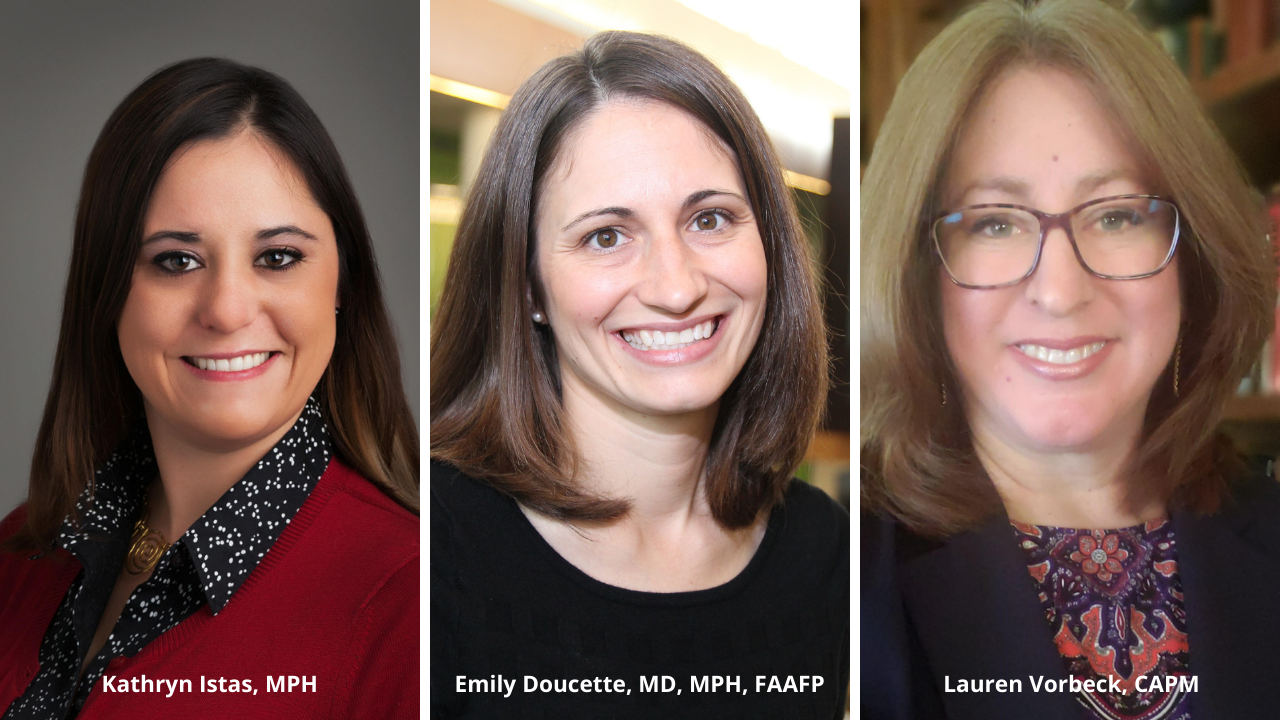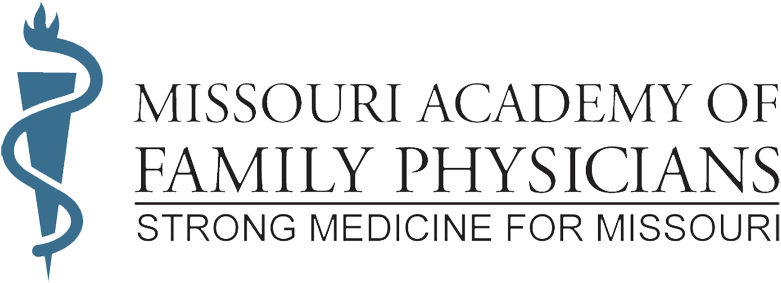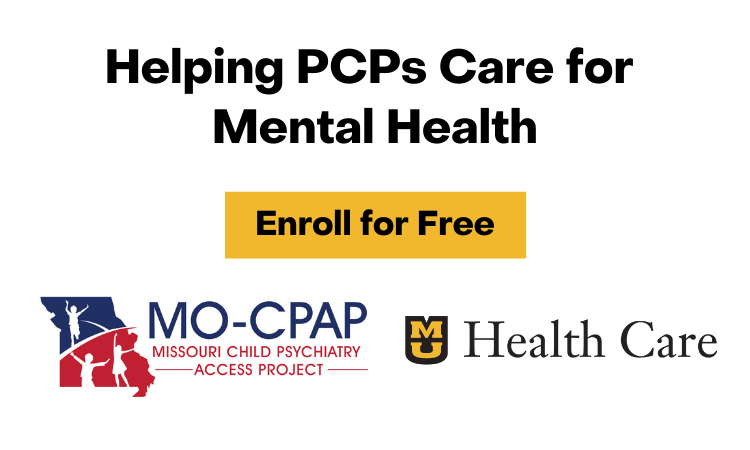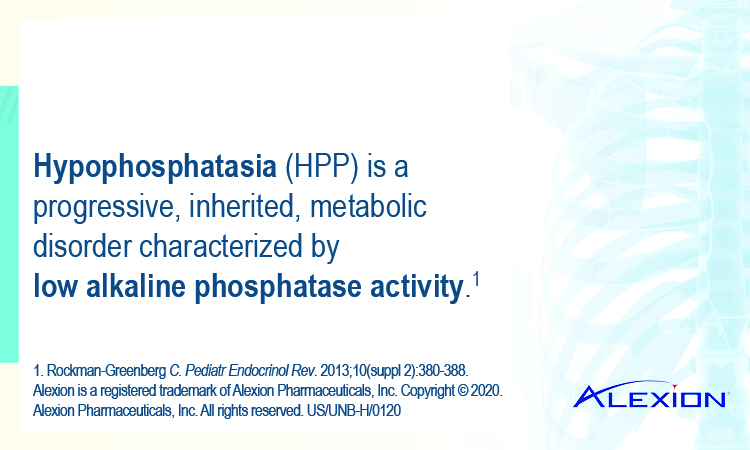The Role of the Family Physician in Addressing Respiratory Health Disparities in the Wake of COVID-19
Authors: Kathryn Istas, MPH, Emily Doucette, MD, MPH, FAAFP and Lauren Vorbeck
The COVID-19 pandemic has made the public more aware of mechanisms of transmission for respiratory viral illnesses. The public has also evolved in its understanding of the role of public health, non-pharmaceutical interventions, and the biology of vaccinations. Equally important, the pandemic has increased attention on existing disparities in respiratory health among Missourians. As family physicians and population health workers, we know that the asthma rate among black children is nearly twice as high than in white children across the state (MO-DHSS, 2019). In St. Louis City, COVID-19 case rates and death rates are higher among Black people than white people (ITSA 2021); and in Kansas City, the death rate for COVID-19 among Hispanic populations is more than twice as high as that in the white population (kcmo.gov). These disparities are attributed to the conditions in which our patients live, learn, work, and play, incorporating factors such as neighborhood characteristics including violence, availability of public housing, environmental factors like pollution and availability of green space, and access to healthcare. Respiratory conditions resulting from a patient’s social determinants of health constitute what is known in academic circles as a “wicked” problem: “wicked” because it is complex, has no single cause, no single effect, and has no given alternative solution (Williams & van’t Hof, 2014).
Solving a wicked problem requires a systems-level approach, looking at the big picture to better understand the inter-relationships of contributing factors, as well as motivation, stakeholder perspectives, and barriers to system improvement. A recent study to prioritize family physician strategies to address health equity ranked “a deep and personal commitment to advancing health equity” first among required leadership qualities (Kovach et al., 2019). As family physicians, we are well-positioned to tackle this wicked problem. We are embedded in and deeply committed to the communities we serve. Physicians are uniquely qualified to observe the relationships among patients, their families, and the environment in which they live, learn, work and play. Our motivation comes from a fundamental belief that all people deserve high-quality, patient-centered healthcare. We can and must channel our unique understanding of our communities towards a collective commitment to closing the health disparities gap, capitalizing on the public’s current awareness of health disparities that we know are not new but have been significantly exacerbated by COVID-19. The question is: How can individual family physicians make an impact on such a wicked problem?
While we are far from out of the woods, vaccines have created some light at the end of the tunnel for the COVID-19 pandemic. However, only 34% of Missourians have initiated a COVID-19 vaccine series, with rates lower in black residents than in white residents (MO-DHSS, 2021). The pandemic put a significant pause on non-emergent healthcare delivery broadly with a particular impact on well and preventative care. Many adults and children are now behind on vaccine schedules which has the potential to lead to preventable disease that can widen health disparities.
Addressing complex and multifactorial problems take multi-pronged approaches, but part of the answer to chipping away at the wicked problem of respiratory health disparities as family physicians is this: transform our commitments to action in the arena we know best, supporting uptake and access to care that can start to narrow health disparities through the earned trust our patients have in us. We can highlight the importance of not just the COVID-19 vaccine, but of the role all vaccines play in protecting health. Consider the use of panel management in your practice to flag patients who are eligible for vaccines and discuss the benefits of vaccination with them. Encourage those who are hesitant to consider the health impacts of vaccination for their families and community more broadly. Where technology access or literacy is limited, help patients find and schedule a vaccine appointment. Consult national and local dashboards for information about communities who are disproportionately impacted by COVID-19 infection. Use AAFP tools including Neighborhood Navigator to connect patients to resources and HealthLandscape to identify vulnerabilities among your patient panels. As a trusted voice in your community, consider engaging with your local public health department to support town halls or other public forums to provide accurate information about COVID-19 vaccines. Collectively, the family physicians of Missouri can drive vaccination rates upwards and drive down the disparate impacts of respiratory illness on minority populations.
References:
Missouri Department of Health and Senior Services, Missouri Asthma Prevention and Control Program. Missouri Asthma Brief 2019. November 2019. Available at https://health.mo.gov/living/healthcondiseases/chronic/asthma/pdf/asthma-in-mo-brief.pdf. Accessed 4/16/2021.
ITSA Web Development Team. COVID-19 Demographic Data. City of St. Louis. St. Louis, MO, 2021. Available at https://www.stlouis-mo.gov/covid-19/data/demographics.cfm. Accessed 4/16/2021.
KCMO Health Department. KCMO COVID-19 Dashboard. Kansas City, MO, 2021. Available at https://kcmo.maps.arcgis.com/apps/dashboards/a9cb1fa166aa44de99dab0b946b08799. Accessed 4/16/2021.
Williams B, van’t Hof S. Wicked Solutions: A Systems Approach to Complex Problems. Copyright © 2014 by Bob Williams & Sjon van’t Hof. ISBN:978-0-473-28735-1.
Kovach KA, Lutgen CB, Callen EF, Hester CM. Informing the American Academy of family Physician’s Health Equity strategy – an environmental scan using the Delphi technique. International Journal for Equity in Health. (2019) 18:97. https://doi.org/10.1186/s12939-019-1007-1.
State of Missouri. Show Me Strong Recovery Plan Website. COVID-19 Public Health Dashboard. Available at https://showmestrong.mo.gov/data/public-health/vaccine/. Accessed 4/19/21.
About the Author
By: Kathryn Istas, MPH, Emily Doucette , MD, MPH, FAAFP and Lauren Vorbeck

Emily Doucette , MD, MPH, FAAFP – Chief Medical Officer, St. Louis County Department of Public Health



